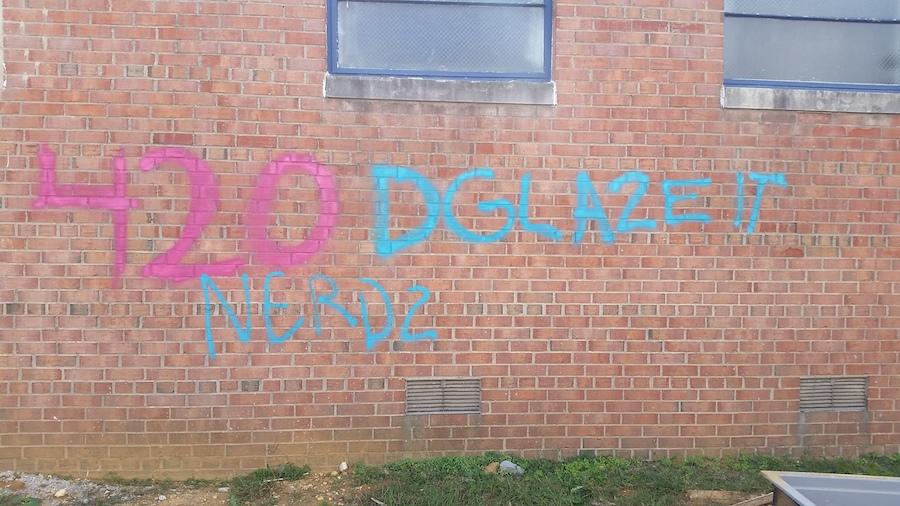Graffiti should have no double standards
October 29, 2014
Students peered curiously as custodians sprayed away the newest graffiti on the brick wall outside the front entrance on Oct. 24. Several days earlier, the words “420 DGlaze it nerdz” sprayed in bright pink and blue letters had suddenly cropped up on the wall, immediately piquing the interest of the student body.
This graffiti mirrored one from last year that appeared on one of the walls protruding inside the JLounge, which read “D. Glaze… Tear down this wall,” an allusion to Former President Ronald Reagan’s call in 1987 for Soviet Union Leader Mikhail Gorbachev to tear down the Berlin Wall.
As much as I promote students having the right to free speech, I felt that the treatment of this graffiti compared to last year’s “D. Glaze… Tear down this wall” graffiti was unfair. There shouldn’t be double standards for tolerating the graffiti appearing around the building. The school should either allow all forms of expression — as long as it does not make any threats to “bomb, burn, damage or destroy” the building, as the Student Rights and Responsibilities outlines — or ban it entirely.
In fact, it is entirely possible that the perpetuator of “420 DGlaze it” was inspired by the “Tear down this wall” graffiti, especially with the reference to “D. Glaze,” or Principal Evan Glazer.
However, there is a difference between the two graffitis gracing the walls. One, which is inside the building and hidden from the public, references world history while the other, which is outside the building and open to all, alludes to smoking marijuana. However, these two instances have different implications, as “Tear down this wall” criticizes the renovation efforts inside the JLounge, while “420 DGlaze it” is rather harmless in effect.
The school should draw a clear line on what is acceptable or not. For example, what I think is acceptable are the very cool chalk interactive questions that courses have posted, asking students questions about their dreams. However, when it comes to the recent graffiti, there shouldn’t be gray areas, because ultimately, graffiti benefits no one when the building is being defaced.






